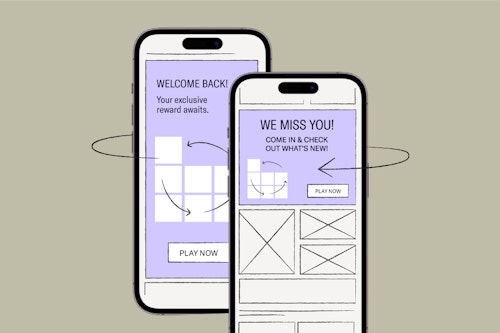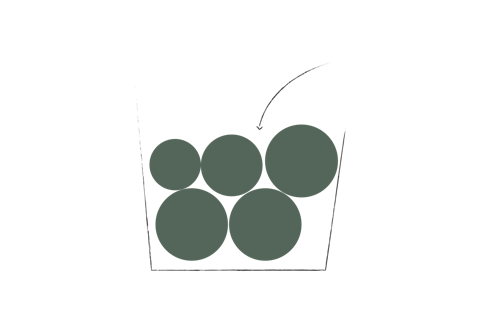Importance of running retargeting along with UA
November 28, 2019

As a mobile marketer, you may know about retargeting and how it works, but you might not be sold on the idea of including it in your app marketing strategy from the beginning of your campaign launch. You might be more comfortable relying on user acquisition (UA) campaigns. And you'd be right — investing in a strong UA campaign makes perfect sense, but it might not be enough to achieve strong user retention because around 90% of daily active users will churn in the seven days after installing an app.
MYTH:
- "I don’t want to target my newly acquired users because they are most likely to convert organically. Retargeting efforts are only worth it at a later stage."
REALITY:
- UA must be supported by a well-thought retargeting strategy from the start to increase engagement and activate your audience.
In this article we show why you should plan your app retargeting campaigns sooner rather than later. We will explain why app retargeting is worth the investment and how it helps you achieve your long term goals.
How can you benefit from retargeting alongside your UA campaigns?
- Retargeting drives traffic after the app install, keeping users engaged for longer. Retargeting is a catalyst to bring back existing app users and turn them into paying users. These users are usually more willing to purchase, unlock new levels, or try a newly released app feature.
When it comes to app growth, it all starts with UA. During the app launch stage, naturally, the focus will fall on boosting installs and getting new users onboard. You'll want to build a large user base to optimize ad spending toward return-on-investment (ROI) and keep a close eye on costs per install. However, is that all you should be focusing on when it comes to your app marketing strategy?
A well-developed approach that aims to achieve exponential and consistent growth must consider retargeting from the beginning. Boosting user numbers is a must, but you should also check in on customers as time passes to ensure they remain engaged with the app.
Your ultimate focus should be on improving the lifetime value (LTV) of your users. Once new users install and register, it is time to think about how to build a long-term retargeting strategy to keep them in the app.
Habit drives retention
You might assume that once a user installs an app, they will use it and use it often. You might also think that, in time, they will start purchasing whatever offers an app presents. However, the harsh truth is that most people will download your app and uninstall it the next day or forget about it.
No business has access to unlimited users. According to industry benchmark reports, out of the new users you acquire, around 90% will not engage after a week of installing your app. That is why it is essential to complement your acquisition efforts with strong and consistent app retargeting campaigns.
A snapshot of reasons to consider retargeting along with your UA campaigns
- App retargeting campaigns have 152% higher engagement rates on average than user acquisition campaigns.
- Retargeted users tend to make more purchases when compared with newly acquired users.
- Retention is higher for retargeted users versus non-retargeted new users during the first week after install.
1. Retargeting can help with app retention
A user who installs your app has a better chance of being monetized and staying in the app if they are retargeted. Studies show that there is a significant difference between retargeting and acquisition results when looking at performance per day and per week across different metrics.
At Remerge, we've found that retention rates are slightly higher for retargeted users, especially if they are shown ads during the first week after they have installed the app. While newly acquired users record more sessions immediately after they have installed the app, we see higher levels of engagement and long-term app usage from those who are part of app retargeting campaigns. Retargeted users are more likely to trigger events, such as making a purchase or spending time on different features.
2. Retargeting can help with engagement
A good indicator of engagement is the number of sessions a user registers, particularly for Social and Entertainment apps. Retargeting lets you communicate with users during these sessions and encourage them to complete an action within your app, such as checking their messages or listening to new songs.
Also, app retargeting campaigns allow you to learn more about your new users. You'll gather more insights about target audiences and their behaviors, and can use this intel to create customized ads. Personalization does matter. Users are more likely to engage with an ad offer that feels tailor-made for their needs.
3. Retargeting can attract loyal users who spend more
Are you re-engaging your most active and (potentially) high-paying users? You'll have a better chance of getting users to convert and make a purchase if you focus your efforts on those that have shown intent.
When looking at Food Delivery apps, for example, newly acquired users may open the app multiple times a day without making a purchase. An app retargeting campaign can bring these users further down the marketing funnel by offering discount offers or time-limited deals. From there, you may find that they continue spending
4. Retargeting can help lower your overall ad spend
Retargeted users tend to spend more, which means that they engage with app offers at a lower cost. Data show that marketers need to spend an average of $76.40 to acquire high-value users who are willing to make app purchases. Prioritizing and planning app retargeting campaigns before your users uninstall your app will allow you to save costs and increase their LTV.
5. Retargeting will allow you to perfect your audience targeting
As mentioned, running app retargeting campaigns will give you a deeper understanding of the behavior of a user base. Plan and run app retargeting campaigns, look at the results, optimize, and gather in-depth insights. These insights are valuable and crucial to identifying users who have shown interest in the app offerings - meaning you won't waste time targeting as many users as you can for the sake of it.
Work with your app retargeting partner to find users who are most likely to engage, spend more, and become regular users.
In Summary
User acquisition has a narrow focus on the early stage of a user’s lifetime cycle. An app retargeting strategy supports and complements user acquisition efforts by focusing on improving LTV.
Get the latest app marketing insights
Join our newsletter





